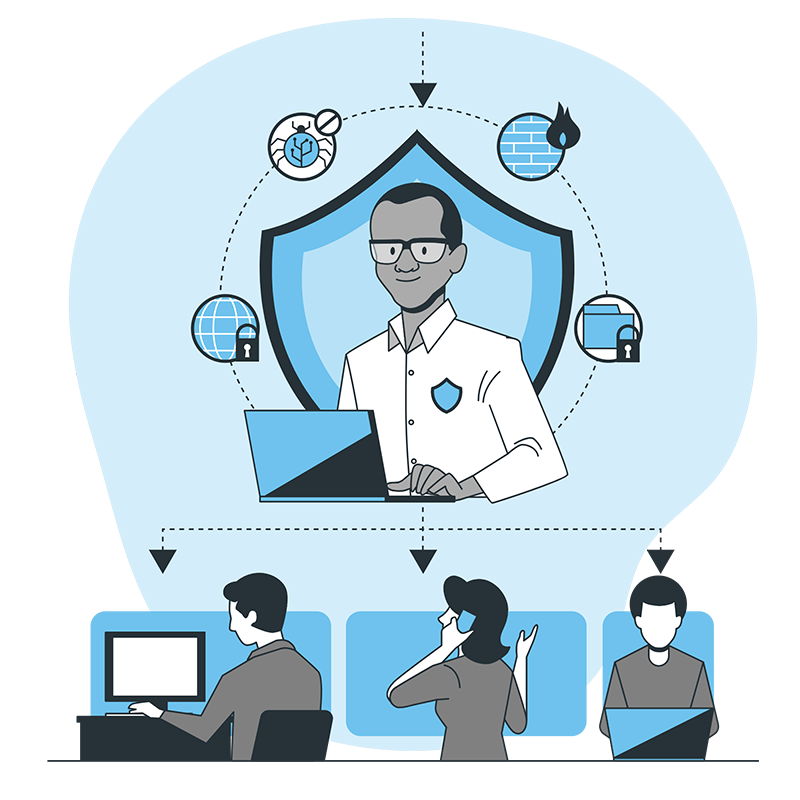In an increasingly digital world, the healthcare sector faces significant cybersecurity challenges. Healthcare institutions, custodians of highly sensitive patient data, have become prime targets for cybercriminals. Facing this growing threat, the European Union has implemented the NIS 2 Directive (Network and Information Security), strengthening security requirements for critical sectors including healthcare. This major regulatory evolution comes as data protection has become a strategic priority for healthcare providers. Tailored GDPR compliance support has now become essential to navigate this complex regulatory landscape.
Understanding the NIS 2 Directive and Its Implications for Healthcare
Fundamentals of NIS 2
The NIS 2 Directive, adopted by the European Union, represents a significant advancement in cybersecurity regulation. It succeeds the first NIS Directive by substantially expanding its scope and strengthening obligations for covered organizations. For healthcare, this directive requires a profound revision of digital security practices.
Healthcare providers, now classified as essential entities, are subject to the directive’s strictest requirements. This classification recognizes these organizations’ crucial societal role and the need to protect their information systems against cyber threats. From public hospitals to private clinics, medical laboratories to imaging centers, all must now comply with these new obligations.
New Requirements for Healthcare Providers
NIS 2 mandates healthcare organizations implement technical and organizational measures proportionate to their risks. This includes:
- Comprehensive analysis of healthcare-specific cyber risks
- Implementation of incident detection systems
- Development of robust business continuity plans
- Regular staff training on cybersecurity issues
- Strengthening digital supply chain security
The directive also requires rapid reporting of significant incidents to competent authorities, typically within 24 hours, followed by detailed reports within 72 hours. This reporting obligation helps create a threat intelligence sharing ecosystem benefiting the entire sector.
To ensure compliance, healthcare providers may consider conducting a Data Protection Impact Assessment (DPIA) to identify and minimize risks associated with health data processing.
Sector-Specific Risks in Healthcare
Unique Vulnerabilities of Healthcare Institutions
The medical sector presents distinct vulnerabilities making it a prime target for cybercriminals. Key risk factors include:
Growing dependence on information systems for daily care delivery, from administrative management to connected medical equipment. Any disruption can immediately impact care quality and patient safety.
The exceptional value of health data on black markets – up to ten times more valuable than financial data. These records contain personal, medical and financial details usable for various fraud schemes.
A heterogeneous IT infrastructure often comprising specialized medical devices running outdated operating systems that are difficult to update. These systems, sometimes designed without security priorities, create potential vulnerabilities.
To address these challenges, many healthcare providers engage an external DPO, a data protection expert providing comprehensive compliance oversight.
Consequences of Cyberattacks in Healthcare
Cybersecurity incidents in healthcare can have devastating consequences far beyond financial impacts:
Direct life-threatening risks to patients when critical systems like life support equipment, medication dispensing systems or electronic health records become unavailable.
Disruptions to care continuity, causing postponed surgeries, patient transfers to other facilities, or temporary returns to less efficient paper-based processes prone to errors.
Severe legal and reputational consequences following breaches of GDPR-protected sensitive data, potentially resulting in substantial fines and lasting patient trust erosion.
Providers in major French cities, particularly exposed due to their size and visibility, can benefit from specialized support like that offered by a DPO service in Paris or DPO service in Lyon.
NIS 2 Compliance Strategies for Healthcare Providers
Cybersecurity Governance and Organization
NIS 2 compliance begins with establishing robust cybersecurity governance. For healthcare providers, this requires:
Appointing a Chief Information Security Officer (CISO) with sufficient authority to implement the organization’s cybersecurity strategy.
Direct involvement of senior leadership in strategic security decisions, with regular oversight obligations.
Creating a multidisciplinary security committee incorporating representatives from various departments (medical, technical, administrative) to ensure holistic cybersecurity approaches.
For organizations seeking integrated compliance approaches, using a GDPR compliance software can streamline documentation and regulatory tracking.
Technical Measures and Best Practices
Beyond governance, NIS 2 requires implementing robust technical measures. For healthcare, this includes:
Strengthening authentication for critical system access, with widespread multi-factor authentication for medical and administrative staff.
Effective network segmentation separating administrative, medical and connected device systems to limit intrusion spread.
Rigorous backup policies following the 3-2-1 rule: three data copies on two different media, one offsite, with regular restoration testing.
A vulnerability management program including regular scanning and prioritized patching of exposed or critical systems.
Deploying incident detection and response solutions capable of quickly identifying suspicious network activity.
These technical measures should be accompanied by broader considerations aboutcorporate ethics, particularly important when handling sensitive health data.
Aligning NIS 2 with Other Sector Regulations
Synergies with GDPR
NIS 2 doesn’t replace GDPR but effectively complements it. While GDPR focuses primarily on personal data protection, NIS 2 expands the scope to overall network and information system security. For healthcare providers, this complementarity translates to:
An integrated risk management approach considering both data confidentiality and system availability/integrity aspects.
Governance synergies with DPOs and CISOs working closely to ensure harmonized compliance.
Common procedures for incident management and reporting, with aligned timelines between both regulations.
For organizations assessing current compliance levels, a GDPR audit constitutes an essential first step toward compliance.
Convergence with DORA for Healthcare Financial Services
Healthcare providers offering significant financial services must also consider DORA (Digital Operational Resilience Act) regulation. This regulatory convergence requires coordinated approaches to:
Harmonize risk management frameworks across different regulatory requirements.
Optimize resilience testing addressing both NIS 2 and DORA obligations.
Develop unified compliance strategies minimizing redundancies and maximizing resource efficiency.
Organizations operating across France can benefit from location-specific support likeGDPR compliance in Toulouse orGDPR compliance in French Guiana.
Developing a Cybersecurity Culture in Healthcare
Staff Awareness and Training
Successful NIS 2 compliance largely depends on the human factor. In healthcare, where patient care naturally takes priority, establishing cybersecurity awareness presents particular challenges. This cultural transformation requires:
Regular awareness programs tailored to different roles (physicians, nurses, administrative staff), using healthcare-relevant case studies.
Practical training on daily best practices, like identifying phishing attempts targeting medical personnel.
Conducting incident simulation exercises familiarizing staff with emergency procedures during cyberattacks.
Implementing accessible, non-punitive incident reporting systems encouraging disclosure of suspicious activities.
Crisis Preparedness and Management
NIS 2 particularly emphasizes organizational resilience capabilities. For healthcare, where care continuity is paramount, this means:
Developing cyberattack-specific business continuity plans accounting for healthcare operational constraints.
Establishing multidisciplinary cybersecurity crisis teams combining leadership, CISOs, DPOs, technical teams and medical representatives.
Implementing degraded operation procedures maintaining essential services during IT system failures.
Pre-established partnerships with specialized incident response providers for rapid crisis intervention.
Conclusion: A Necessary Investment for Tomorrow’s Medicine
The NIS 2 Directive represents a major turning point for healthcare cybersecurity. Far from being just another regulatory burden, it offers healthcare providers an opportunity to strengthen resilience against increasingly sophisticated threats.
Amid healthcare’s accelerated digital transformation with telemedicine expansion, connected medical devices and AI adoption, securing information systems has become an innovation prerequisite. Providers integrating NIS 2 requirements into overall strategies won’t just avoid penalties – they’ll gain operational efficiency and patient trust.
To meet this challenge, healthcare organizations can rely on expert partners like My Data Solution, specialists in regulatory compliance. Cybersecurity investment is no longer optional but a strategic necessity to safeguard healthcare’s fundamental mission: ensuring patient safety and well-being in a trusted digital environment.



